 W
WThe Coupe d'Aviation Maritime Jacques Schneider, also known as the Schneider Trophy, Schneider Prize or Schneider Cup was a trophy awarded annually to the winner of a race for seaplanes and flying boats. The Schneider Trophy is now held at the Science Museum, South Kensington, London.
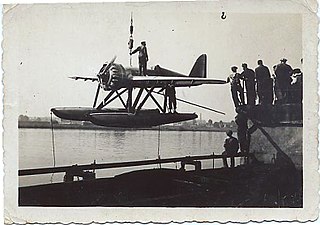 W
WThe Bernard H.V.40 was a racing seaplane designed by Société des Avions Bernard for the French government to compete in the 1929 Schneider Trophy.
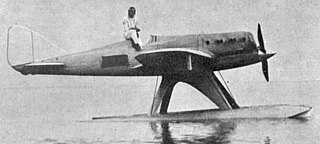 W
WThe Bernard H.V.41 was a racing seaplane designed by Société des Avions Bernard for the French government to compete in the 1929 Schneider Trophy.
 W
WThe Bernard H.V.42 was a racing seaplane designed by Société des Avions Bernard for the French government for use of the French Schneider Trophy team.
 W
WThe Blackburn Pellet was a single-engined, single-seater biplane flying boat designed as a contender for the 1923 Schneider Trophy competition. It was destroyed while taking off for the trials of the contest.
 W
WThe Borel Hydro-monoplane was a French seaplane produced in 1912.
 W
WThe CAMS 36 was a 1920s French flying boat designed and built by Chantiers Aéro-Maritimes de la Seine. It was originally conceived as a single-seat fighter but evolved as a racer to compete in the 1922 Schneider Trophy race. Lack of funds in 1922 and an accident in 1923 meant the two aircraft built failed to participate in a Schneider race.
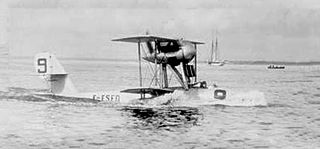 W
WThe CAMS 38 was a French single-seat racing flying-boat designed by Rafaele Conflenti and built by Chantiers Aéro-Maritimes de la Seine (CAMS) for the 1923 Schneider Trophy race. The CAMS 38 was withdrawn from the race during the second lap.
 W
WThe Curtiss CR was a racing aircraft designed for the United States Navy in 1921 by Curtiss. It was a conventional single-seater biplane with a monocoque fuselage and staggered single-bay wings of equal span braced with N-struts. Two essentially similar landplane versions were built as the CR-1 and CR-2, which were both eventually converted to seaplanes as the CR-3 in 1923 and CR-4 in 1924. A refined version was developed for the US Army Air Service under the designation R-6. These latter two aircraft featured refined aerodynamics included surface-mounted radiators.
 W
WThe Curtiss CR was a racing aircraft designed for the United States Navy in 1921 by Curtiss. It was a conventional single-seater biplane with a monocoque fuselage and staggered single-bay wings of equal span braced with N-struts. Two essentially similar landplane versions were built as the CR-1 and CR-2, which were both eventually converted to seaplanes as the CR-3 in 1923 and CR-4 in 1924. A refined version was developed for the US Army Air Service under the designation R-6. These latter two aircraft featured refined aerodynamics included surface-mounted radiators.
 W
WThe Curtiss CR was a racing aircraft designed for the United States Navy in 1921 by Curtiss. It was a conventional single-seater biplane with a monocoque fuselage and staggered single-bay wings of equal span braced with N-struts. Two essentially similar landplane versions were built as the CR-1 and CR-2, which were both eventually converted to seaplanes as the CR-3 in 1923 and CR-4 in 1924. A refined version was developed for the US Army Air Service under the designation R-6. These latter two aircraft featured refined aerodynamics included surface-mounted radiators.
 W
WThe Curtiss R3C was an American racing aircraft built in landplane and floatplane form. It was a single-seat biplane built by the Curtiss Aeroplane and Motor Company.
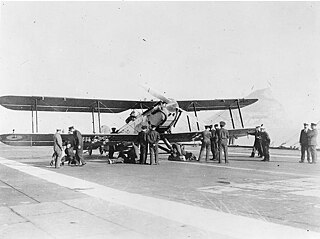 W
WThe Fairey Aviation Company Fairey III was a family of British reconnaissance biplanes that enjoyed a very long production and service history in both landplane and seaplane variants. First flying on 14 September 1917, examples were still in use during the Second World War.
 W
WThe Gloster III was a British racing floatplane of the 1920s intended to compete for the Schneider Trophy air race. A single-engined, single-seat biplane, two were built, with one finishing second in the 1925 race.
 W
WThe Gloster IV was a British racing floatplane of the 1920s. A single-engined biplane, the Gloster IV was a development of the earlier Gloster III intended to compete in the 1927 Schneider Trophy race. One aircraft competed in the race, but retired part way through. The three aircraft built continued to be used as trainers by the High Speed Flight for several years.
 W
WThe Gloster VI was a racing seaplane developed as a contestant for the 1929 Schneider Trophy by the Gloster Aircraft Company.
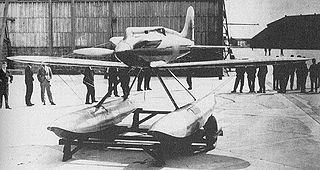 W
WThe RAF High Speed Flight, sometimes known as 'The Flight' , was a small flight of the Royal Air Force (RAF) formed for the purpose of competing in the Schneider Trophy contest for racing seaplanes during the 1920s. The Flight was together only until the Trophy was won outright, after which it was disbanded.
 W
WThe 1927 Kirkham-Wiliams X or Kirkham-Williams Racer was designed as a private US contender for the 1927 Schneider Trophy. Though it flew just before the contest, it was still under development and was withdrawn. Soon after it was modified into a landplane, seeking to set a new speed record. Some high speed flights were made but no official record was set.
 W
WThe Macchi M.7 was an Italian single-seat fighter flying boat designed by Alessandro Tonini and built by Macchi. A modified version of the M.7, the M.7bis won the Schneider Trophy in 1921.
 W
WThe Macchi M.17 was an Italian racing flying boat built by Macchi for the 1922 Schneider Trophy race.
 W
WThe Macchi M.33 was an Italian racing flying boat which competed in the 1925 Schneider Trophy race.
 W
WThe Macchi M.39 was a racing seaplane designed and built by the Italian aircraft company Aeronautica Macchi in 1925–26. An M.39 piloted by Major Mario de Bernardi (1893–1959) won the 1926 Schneider Trophy, and the type also set world speed records that year.
 W
WThe Macchi M.52 was an Italian racing seaplane designed and built by Macchi for the 1927 Schneider Trophy race. The M.52 and a later variant, the M.52bis or M.52R, both set world speed records for seaplanes.
 W
WThe Macchi M.67, was an Italian racing seaplane designed by Mario Castoldi and built by Macchi for the 1929 Schneider Trophy race.
 W
WThe Macchi M.C. 72 was an experimental seaplane designed and built by the Italian aircraft company Macchi Aeronautica. The M.C. 72 held the world speed record for all aircraft for five years. In 1933 and 1934 it set world speed records for piston engine-powered seaplanes; the latter still stands.
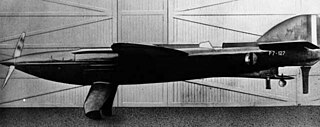 W
WThe Piaggio P.7, also known as the Piaggio-Pegna P.c.7, was an Italian racing seaplane designed and built by Piaggio for the 1929 Schneider Trophy race.
 W
WThe Savoia-Marchetti S.65 was an Italian racing seaplane built for the 1929 Schneider Trophy race.
 W
WThe Short Crusader also called the Short-Bristow Crusader and Short-Bristol Crusader was a British racing seaplane of the 1920s, built by Short Brothers to compete in the 1927 Schneider Trophy race.
 W
WThe SIAI S.12 was an Italian 1910s reconnaissance flying boat, and later Schneider Trophy racer.
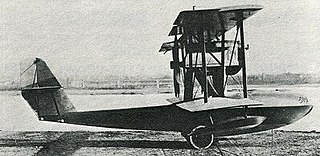 W
WThe SIAI S.19 was an Italian racing flying boat built by SIAI for the 1920 Schneider Trophy race.
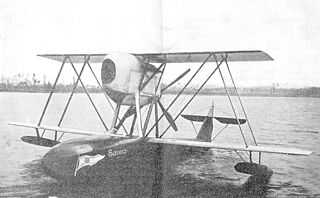 W
WThe SIAI S.21 was an Italian racing flying boat built by SIAI for the 1921 Schneider Trophy race.
 W
WThe SIAI S.51, Savoia Marchetti S.51 or Savoia S.51 was an Italian racing flying boat built by SIAI for the 1922 Schneider Trophy race.
 W
WSolent Sky is an aviation museum in Southampton, Hampshire, previously known as Southampton Hall of Aviation.
 W
WThe Sopwith Tabloid and Sopwith Schneider (floatplane) were British biplanes, originally designed as sports aircraft and later adapted for military use. They were among the first successful types to be built by the Sopwith Aviation Company. The "Tabloid", so named because of its small size, caused a sensation when it made its first public appearance.
 W
WThe Supermarine S.4 was a 1920s British single-engined single-seat monoplane racing seaplane built by Supermarine to compete in the 1925 Schneider Trophy. It crashed and was destroyed before the competition started.
 W
WThe Supermarine S.5 was a 1920s British single-engined single-seat racing seaplane built by Supermarine. Designed specifically for the Schneider Trophy competition, the S.5 was the progenitor of a line of racing aircraft that ultimately led to the Supermarine Spitfire.
 W
WThe Supermarine S.6 is a 1920s British single-engined single-seat racing seaplane built by Supermarine. The S.6 continued the line of Supermarine seaplane racers that were designed for Schneider Trophy contests of the late 1920 and 1930s.
 W
WThe Supermarine S.6B is a British racing seaplane developed by R.J. Mitchell for the Supermarine company to take part in the Schneider Trophy competition of 1931. The S.6B marked the culmination of Mitchell's quest to "perfect the design of the racing seaplane" and represented the cutting edge of aerodynamic technology for the era.
 W
WThe Supermarine Sea Lion I was a British racing flying boat designed and built by the Supermarine Aviation Works for the 1919 Schneider Trophy at Bournemouth, England. The later racing flying boat for the 1922 Schneider Trophy the Sea Lion II was a different design.
 W
WThe Supermarine Sea Lion II was a British racing flying boat designed and built by the Supermarine Aviation Works for the 1922 Schneider Trophy at Naples, Italy which it went on to win. The earlier racing flying boat for the 1919 Schneider Trophy the Sea Lion I was a different design.